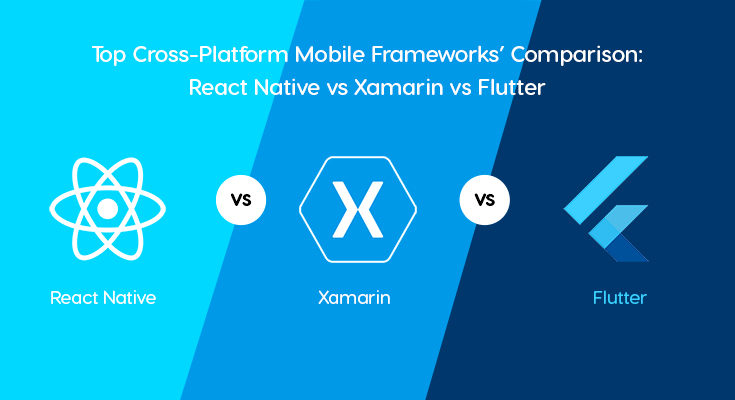Mobile Phones, today, are kept at an arm’s distance.
Mobile Applications are already a fundamental part of our daily life.
As every day we all use mobile devices to make purchases, access our bank account, manage our social networks, etc. the two assertions made above, prove to be right certainly.
The development of mobile applications is an emerging business, as almost every passing day, we are connected to more people and more brands via a few clicks and taps on a mobile device.
Looking at the graph below, one can make out how much significance an app carries in today’s mobile era.
Source: yellowfindigital.com
Why Cross-Platform App Development?
When the talk is about mobile app development, the stress is upon building robust mobile applications to enhance user experience and take it to the next level, simultaneously, bringing fruitful business gains to the company.
Aligning with our goal and taking a serious toll on app performance when we checkout platforms as the best fit, cross-platform app development seem to be on the top, favored by one and all (Businesses as well as Developers).
- Cross-platform app development has a much smoother learning curve than others in the line.
- This technology was born to reduce costs, time, and facilitate the learning and development of mobile applications, also providing the possibility of creating websites with these developments.
- For this reason, we could say that these types of applications are totally multiplatform (Mobile, Tablet, Computer, TV,…) where, with the development of a unique code we can generate applications for the desired platforms. (In the case of mobile, for Android and iOS.)
- The app development lifecycle span is reduced to almost half with the possibility of 96% code-sharing across distinct platforms.
- Testing a single codebase or many smaller ones simplifies the testing process and offers high-quality test coverage.
Cross-Platform Advantages and Disadvantages
| PROS | CONS |
| Codebase is reusable, so can be run on multiple platforms. | Multi-platform Apps are not performance intensive. |
| The code for these applications is written in a single language which reduces time for learning & implementing. | A graphic-heavy application seems a great challenge for cross-platform app development, won’t be the best bet. |
| Cross-Platform Apps are easy to maintain and are highly extensible and scalable. | Cross-Platform applications possess most of the basic features of all the platforms when compared. |
| One change in the main code is reflected in other integrated files too. No need for multiple changes in multiple codes. | Such apps do lack at most of the specific features at times. |
| These applications are relatively cheap and time-saving in comparison to any other kind of applications. | Cross-Platform applications face hardware issues. |
| Such apps carry an extensive reach as they are not platform-dependent. | The updates to these applications can be delayed (may come late). |
Now is the time to set apart different Cross-Platform Frameworks. Let’s take a rundown:
XAMARIN VS REACT NATIVE VS FLUTTER: All in All Comparison
#Flutter
Reinventing the Native Mobile SDK
Framework Development Motive:
- Show off technical skills and improve corporate brand
- Streamline in-app development
- External procurement of framework debug resources
- Revitalization of the mobile application development industry
#Xamarin
Introducing C # to mobile application development
Framework Development Motive:
- Corporate Brand Improvement
#React Native
Introducing web front end development method by React to mobile application development.
Framework Development Motive:
- Show off technical skills and improve corporate brand
- Streamline in-app development
- External procurement of framework debug resources
Let’s see an explanation of the motive.
The significance of Xamarin to Xamarin was the direct revenue from selling the framework. Xamarin was acquired by Microsoft only after Xamarin was quite mature, thus, a notable reason for Xamarin to exist at the time of acquisition is to improve the corporate brand.
The immediate motivation for Facebook to start with React Native App Development was predictably to make the mobile experience go beyond what is delivered by HTML5. The purpose of releasing it on OSS is to improve the corporate brand by debugging React Native by the application developer community and showing off the technical capabilities.
[Zuckerberg doesn’t say what’s wrong with HTML5 for them. However, it implies that the quality of the developed product was insufficient. “A great mobile experience requires the highest quality and only native apps can achieve it.”]
The first motivation for Google to start the development of Flutter was to enhance the efficiency of in-house development. Material Design with a plain Android SDK is difficult. In fact, the implementation of Material Design on Android is more advanced in the Flutter version than in the Android SDK version.
The motivation can also be seen from the early adoption of Flutter in the advertiser app of AdWords, which is the most external mobile app for Google’s business.
Having all that said about how these robust platforms took an industry advent, now we’ll dig deep into each spectrum targeting their architecture, programming languages, platform, and others.
# Target Application Architecture
| XAMARIN | REACT NATIVE | FLUTTER |
| MVVP | Reactive | Reactive |
Naturally, React Native adopts the Reactive pattern, which is popular in React.
Inventing the Reactive pattern and bringing it to mobile would be a credit to Facebook.
Flutter also respects React and uses the Reactive pattern.
However, instead of introducing the development method of the web front end, it is built from scratch as a native mobile application development framework.
Xamarin utilizes the MVVM pattern, (Model-View-ViewModel), maintaining a clean separation between app logic and UI aims to resolve many other development glitches to build an intuitive and productive mobile application.
# Target Developer (Platform) (Migration)
| XAMARIN | REACT NATIVE | FLUTTER |
| Web Front End | Web Front End | |
| Web Back End | Web Back End | |
| Existing Mobile, etc. |
Is the web backend, the biggest use case of C #? With Xamarin, backend developers can leverage the power of C# and can develop mobile apps with C # anyway.
As its name suggests, React Native means that those who were developing the web front end with React can now also develop mobile applications.
[Prefer Reading: “Switching from Front-end Development to React Native.”]
Flutter is more ambitious and feels like it mobilizes a wide range of development resources including web backends to mobile application development, centering on existing mobile application developers and web frontend developers.
# Target Developer (Programming language) (Transition)
| XAMARIN | REACT NATIVE | FLUTTER |
| C# with .Net | JavaScript, Objective-C, Swift, even Java | Dart |
Again, the motivation for C # adoption in Xamarin will be to mobilize C # users to develop mobile apps.
Love of C #!
The motivation for adopting Javascript by React Native will also mobilize Javascript users for mobile application development, especially in web front-end development.
Influence of Javascript!
The motivation for adopting Dart in Flutter will be to mobilize users of object-oriented languages for mobile application development widely.
Mobile application developers who are still using Java, Objective-C, also need to consider modern Dart. It seems to be attractive and intuitive. The reason Dart avoids quirky syntax and dares to make it mundane is to reduce the migration hurdles for users of these languages.
Domination of Dart!
By the way, Mr. Hixie, who modified the milestone of Flutter, is a person who was previously working on the specification of HTML5. Perhaps because of that, it seems that the Dart language level is very concerned about the ease of transitioning to Flutter for Web developers.
Anyway, Dart is often criticized for its language features in comparison with Kotlin and Swift, but the Flutter team does not seem to care about language features so much.
Overview: Fulfill your Business App Requirements as Needed
The Overlords (Google, Facebook, Microsoft…) and the industry leaders have been striving to produce the best ever frameworks and platforms to enhance user experience and developer experience in parallel.
Despite accommodating a fixed set of pros and cons, the market has witnessed infinite amazing and outstanding apps, built using one of these individual frameworks.
Every business and developer has a predefined set of requirements and criteria set for mobile app development and platform selection, so here is a quick view of the robust platforms described as per distinct parameters of scalability and performance.
| METRICS | XAMARIN | REACT NATIVE | FLUTTER |
| Performance | Close to Native | Close to Native | High-End |
| GUI | Native UI Controllers | Use Native UI Controllers | Proprietary Widgets |
| Programming Language | C# with .Net | JavaScript, Objective-C, Swift, even Java | Dart |
| Code-Reusability | 96% | 90% | 50-90% |
| Suitability | Simple normal apps | Almost all apps | Almost all apps |
| Popular Apps | Insightly, FreshDirect | Instagram, Tesla, Skype | Alibaba, Google Greentea |
| Picing | Paid & open source | Open source | Open source |
Now if we have to answer: Which is the most feasible and best cross-platform for a mobile app development project? I guess we can predict the right say.
Of Course, Flutter!
Having an upper hand, ignoring a few of its cons, Flutter made itself to be a powerful cross-platform framework that is sound and efficient in crafting beautiful intuitive, performant and productive mobile apps, conforming to the specific business needs.
Flutter’s Rising Popularity
Source: foresightmobile.com
Tech analysis reveals that Flutter occupied 6th place in the list of most popular mobile app development frameworks in the early 2019 and superseded ReactNative in occupying GitHub Stars.
Though flutter emerges as an excellent framework, you can consult a cross-platform app development company for your precise business requirements and get recommendations as per the project scope and budget.
I hope I was able to show you a different landscape of each multi-platform framework, providing the concept-based comparison of the functional elements of each.



